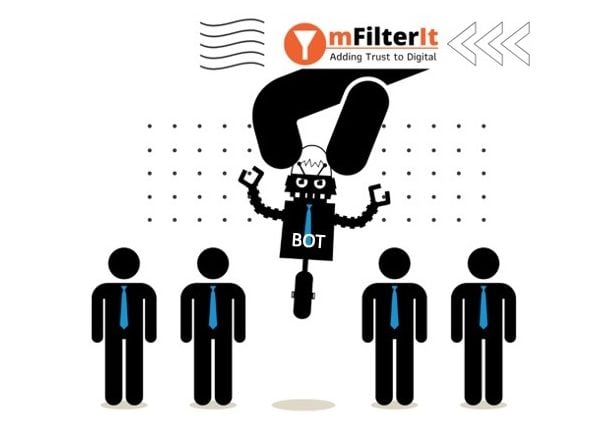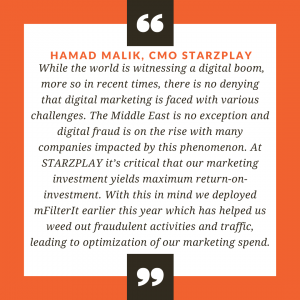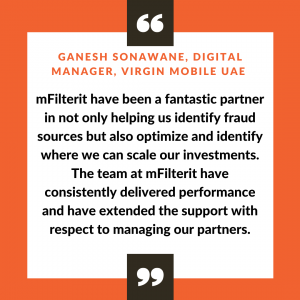
The discount day phenomenon, Black Friday, has now firmly cemented itself in most markets and is one of the most awaited events in the retail and e-commerce industry. Brands large and small now compete to grab attention and give the best deals to the limited wallet of the customer. This year, however, there is a lot more expectation from this day. While retail is yet to pick up, e-commerce, however, will see one of its largest sales ever on this day.
One thing that 2020 has ensured is the fact that users are more comfortable shopping online than they ever were. What this means is that every e-commerce platform is gearing up to make huge spends online.
Online advertising is not without its flaws. As spends go higher, the bad players get more opportunities to swindle your marketing budgets, making it a very lucrative season for them too.
But there are things that you can do to reduce ad fraud at your end. Some of the recommendations for advertisers to help optimise their performance campaigns are the following:
Some of the recommendations for advertisers to help optimise their performance campaigns are the following:
- Look for organic stealing – as the season is that of shopping so there is a huge chance that customers will organically convert without an outside force. Fraudulent publishers use this to falsely attribute sales to themselves. So, look out for install partner name vs event partner name in your attribution system. You will most likely find a pattern there.
A large e-commerce player in the region noticed that affiliates were stealing organic users to meet cost-per-sale KPIs. It can easily happen to anyone when you do not use a tool.
- Look for click spamming – there is an acceptable number of clicks that a user generates before buying something. This number should be more than 30 in a month. Taking that as a threshold, look for how many clicks were coming per user. You will be surprised to see that there will be a ton of users giving you more than 100 clicks in a month. These are bot-generated clicks and not from real users. These clicks are fired only to falsely claim attributions. Retargeting partners quite often click spam to claim a good conversion. Look out for the clicks to conversion rates. Set a benchmark.
- Look for Click to open time – when you click on an ad, it takes 1-2sec to open the app. Let’s factor in other variables and say 10 mins is the maximum time that it will take for the app to open. Well, 10mins is a lot of time but for a working theory let’s take 10 mins. Now analyze how many clicks led to an app open in that period. You will see a pattern and you will know if there is a deep-linking issue or a click spamming issue.
 4 Look for acquisition partners running re-targeting campaigns – there is a clear demarcation between acquisition and remarketing. Often remarketing is more expensive because your customers have already shown some interest, but some bad publishers use this remarketing inventory to acquire users with good conversion rates. This is especially true when you are working on cost-per-action (sale, subscription or registration) models.
4 Look for acquisition partners running re-targeting campaigns – there is a clear demarcation between acquisition and remarketing. Often remarketing is more expensive because your customers have already shown some interest, but some bad publishers use this remarketing inventory to acquire users with good conversion rates. This is especially true when you are working on cost-per-action (sale, subscription or registration) models.
This is very common. Acquisition is no longer set at install level. The partners need to show sales and hence they go retargeting right after acquisition. Most often than not, they will be click spamming.
Other than these you can also choose to monitor coupon sites and Google search. In coupon sites, users are provided with fake/expired coupons typically as a clickbait and then your affiliate will claim the conversion. Brand bidding on Google is similar. Affiliates bid for brand keywords and take away organic users, in turn increasing the bid rate on your own keywords.
 At mFilterIt, we ensure we provide value to the entire ecosystem. Our services not only help advertisers but also agencies and networks. We work to stop bad players from reducing faith in the entire ecosystem and in the process we help everyone garner more from their efforts and investments. As an advertiser, it is important for you to ensure your marketing budgets are well spent, as an agency you have to ensure you buy the right kind of media and deliver optimised results to your clients and as a network you have to ensure bad publishers are not giving you a bad name in the region where the number of good networks is limited.
At mFilterIt, we ensure we provide value to the entire ecosystem. Our services not only help advertisers but also agencies and networks. We work to stop bad players from reducing faith in the entire ecosystem and in the process we help everyone garner more from their efforts and investments. As an advertiser, it is important for you to ensure your marketing budgets are well spent, as an agency you have to ensure you buy the right kind of media and deliver optimised results to your clients and as a network you have to ensure bad publishers are not giving you a bad name in the region where the number of good networks is limited.
For more information please visit www.mfilterit.com or email us at [email protected]









